Table of Contents
ToggleInclusive Education Module 1: Bridging Gaps, Fostering Inclusion
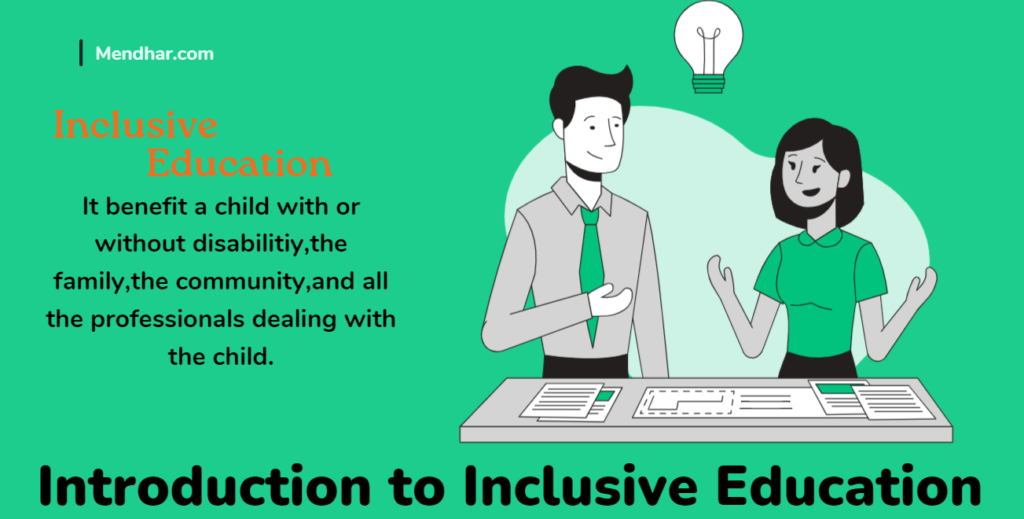
In today’s progressive society, the concept of education has evolved significantly, especially concerning individuals with disabilities. Gone are the days when they were confined to institutions with minimal educational opportunities. The transition from segregated settings to integrated education, and now, to the more inclusive model, marks a pivotal shift towards a more equitable and accepting educational landscape.
Inclusive Education Module 1 marks the foundational step towards realizing the vision of an inclusive society, where every individual, regardless of ability, is welcomed and supported in their educational journey. Let’s delve into the intricacies of this transformative module and explore its significance in fostering diversity, equality, and empowerment.
Understanding Inclusive Education:
At its core, Inclusive Education aims to dismantle barriers and promote equal access to education for all students, including those with disabilities. It transcends the mere physical presence of students in mainstream classrooms; it advocates for tailored teaching experiences that accommodate diverse learning needs. Inclusive Education Module 1 emphasizes the importance of creating a supportive environment where every student feels valued, respected, and empowered to succeed.
Key Recommendations of the RPWD Act, 2016:
The Rights of Persons with Disabilities Act (RPWD Act), 2016, lays down crucial guidelines for achieving inclusive education. These recommendations include:
- Non-discrimination in schools: Ensuring that all students, regardless of their disabilities, have equal opportunities for education.
- Accessible infrastructure: Creating environments that are physically and technologically accessible to students with disabilities.
- Reasonable accommodation: Providing necessary support and adjustments to meet the diverse needs of students.
- Use of Braille and Indian sign language: Recognizing the importance of alternative communication methods for students with sensory impairments.
By adhering to these recommendations, educational institutions can foster a culture of inclusivity and empower students to thrive in diverse learning environments.
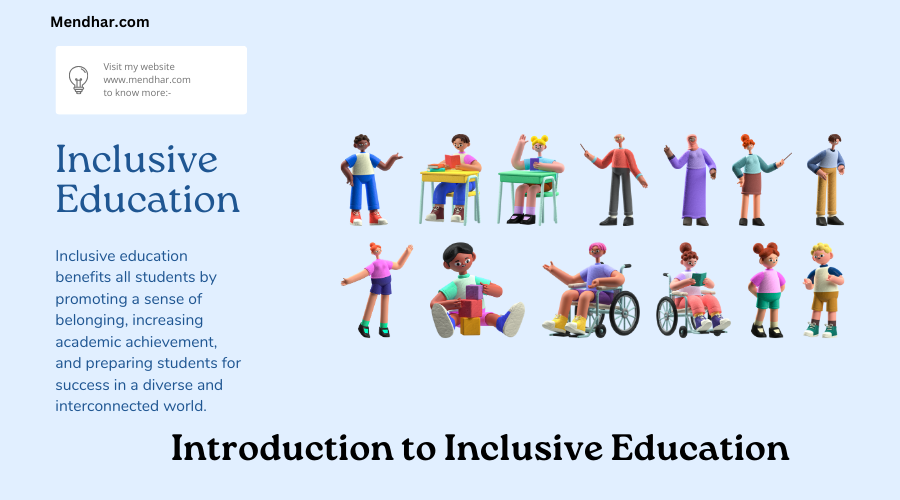
The Role of Educators in Inclusive Education:
Educators play a pivotal role in the success of inclusive education. The policy emphasizes the recruitment and training of special educators who are equipped to guide students in an inclusive setup. Furthermore, regular teachers receive specialized training to effectively support students with diverse learning needs. The ‘Buddy System’ fosters peer support and collaboration, encouraging students to learn from each other in both educational and non-educational activities.
Benefits of Inclusive Education:
Inclusive Education Module 1 heralds a paradigm shift in the way we perceive and approach education. By embracing inclusivity, educational institutions create an environment where every student’s unique talents and abilities are recognized and celebrated. Inclusive education boosts students’ confidence, fosters empathy and understanding, and prepares them to navigate the complexities of a diverse society. It promotes a culture of acceptance and respect, laying the foundation for a more inclusive and equitable future.
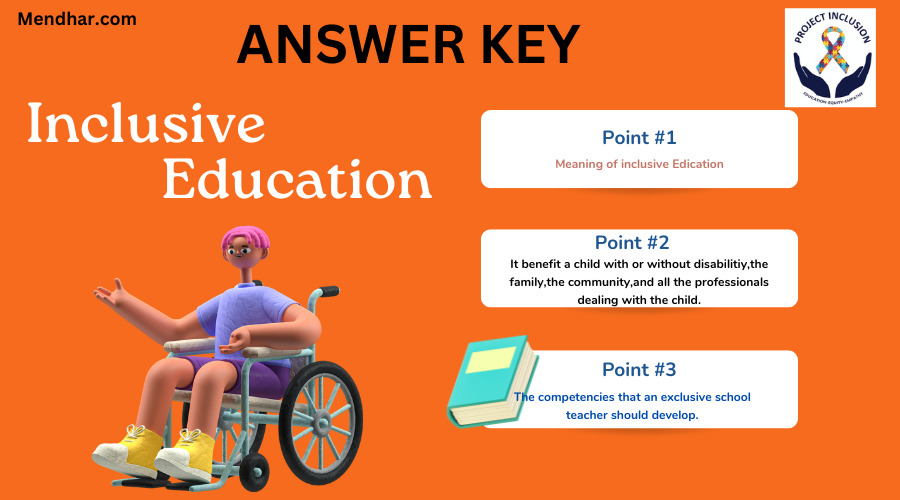
Inclusive Education Module 1:Answer key
Q. Unique Disability ID Card (UDID) is also known as –
(i)Swavalamban Card✅
(ii)Disability Card
(iii)Identity card
(iv)Swasthya card
Q. A complex, lifelong neuro-developmental disability which is characterized by impairment in social communication and interaction, and restricted, repetitive patterns of behaviour, interests, or activities. This disability is known as:-
(i)Learning Disability
(ii)Autism✅
(iii)Intellectual Disability
(iv)None of the above
Q. Integrated education shifted students with special needs to:-
(i)Special school
(ii)Mainstream school✅
(iii)Inclusive school
(iv)Public school

Q. What are the recommendations made by the RPWD Act, 2016?
(I)No discrimination in schools
(ii)Accessible infrastructure
(iii)Reasonable Accommodation
(iv)All of the above ✅
Q. Which Act states that Inclusive education is such a system of education where students with disabilities and regular students learn together?
(I)ADIP
(ii)RPWD✅
(iii)MSJE
(iv)SIPDA
Q. The ‘Buddy System’ encourages children to learn to support their peers with disabilities, in educational and non-educational activities.
(i)TRUE✅
(ii)FALSE
2). Inclusive Education boosts the confidence of the students and motivates them to strive more in life.
(i)TRUE✅
(ii)FALSE
Q. In an inclusive setting, children do not realize that each person has their own unique talents, abilities and challenges
(i)TRUE
(ii)FALSE✅
Q. Why are psychological assessments important for children with special needs?
(i) help in subject selection
(ii)To guide the parents and teachers to plan long-term goals for the child
(iii)To keep track of the child’s progress.
(iv)All of the above.✅
Q. A teacher ensures proper classroom management by making sure that no child gets left behind or misses concepts in the classroom –
(i)TRUE✅
(ii)FALSE
Q. Non-government organizations, working as a team with the government, plays a vital role in formulating policies or plans in inclusive education
(i)FALSE
(ii)TRUE✅
Q. In what popular form do we know the special education service is provided under different arrangements?
(i) Special school✅
(ii)Remedial school
(iii)Play school
(iv)Homeschooling


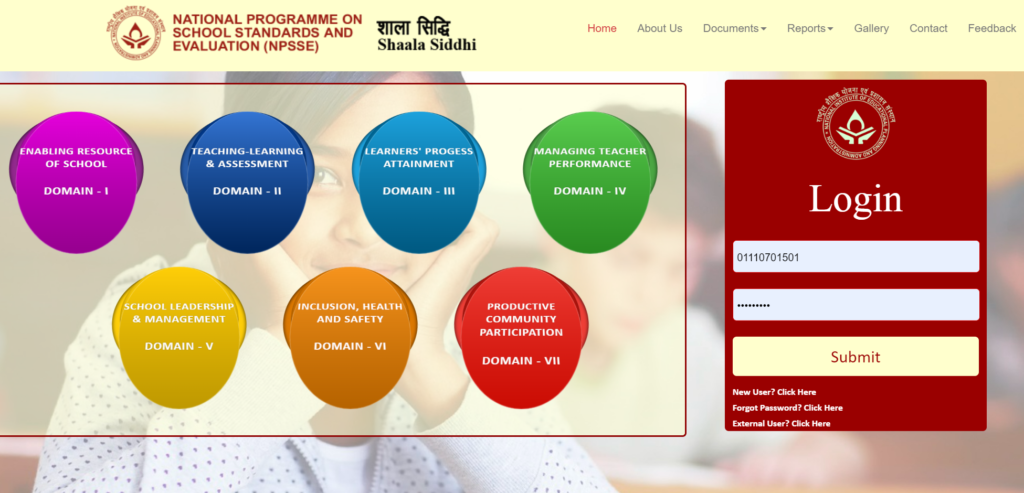
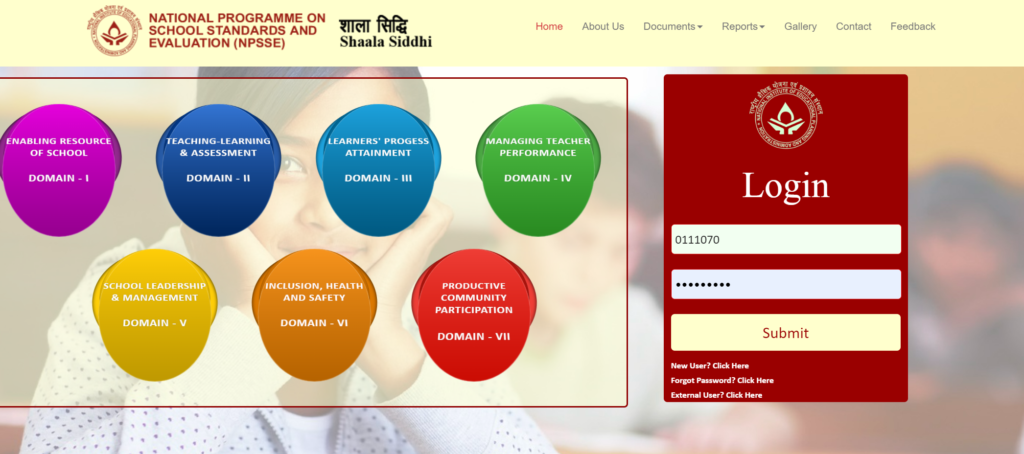
Pingback: Introduction to Disability Module 2 -
Pingback: Autism Spectrum Disorder: Module 3 Answer Key -
Pingback: Intellectual Disability - Module 4 Answer Key -
Pingback: Specific Learning Disabilities: Module 5 -
Pingback: Multiple Disability: Module 7 Answer key -